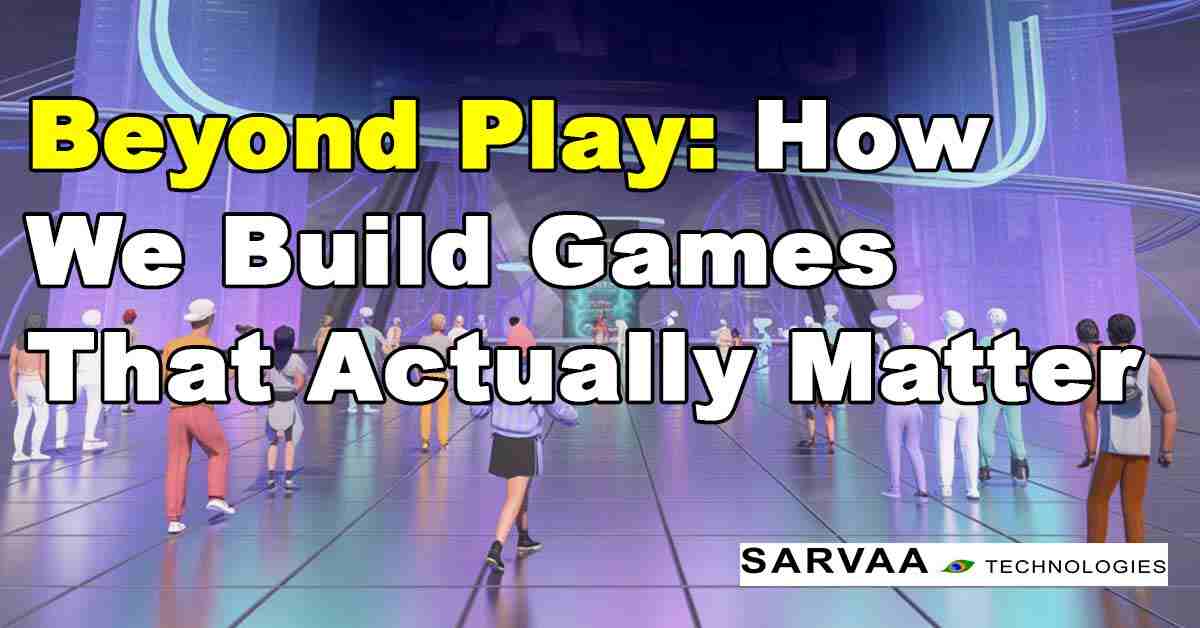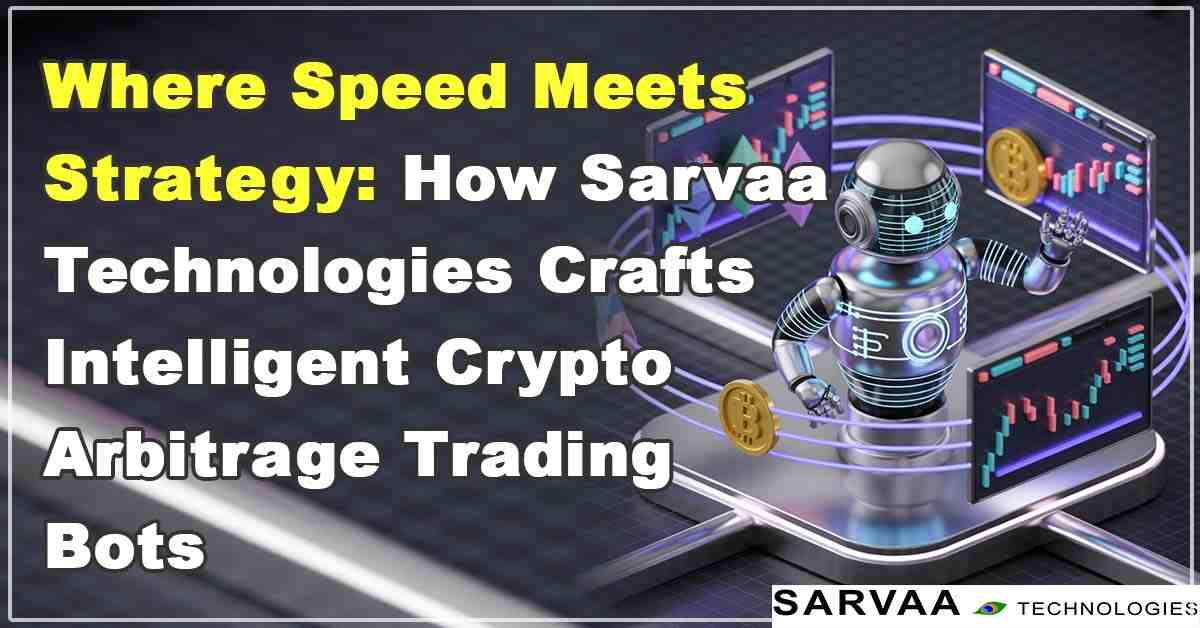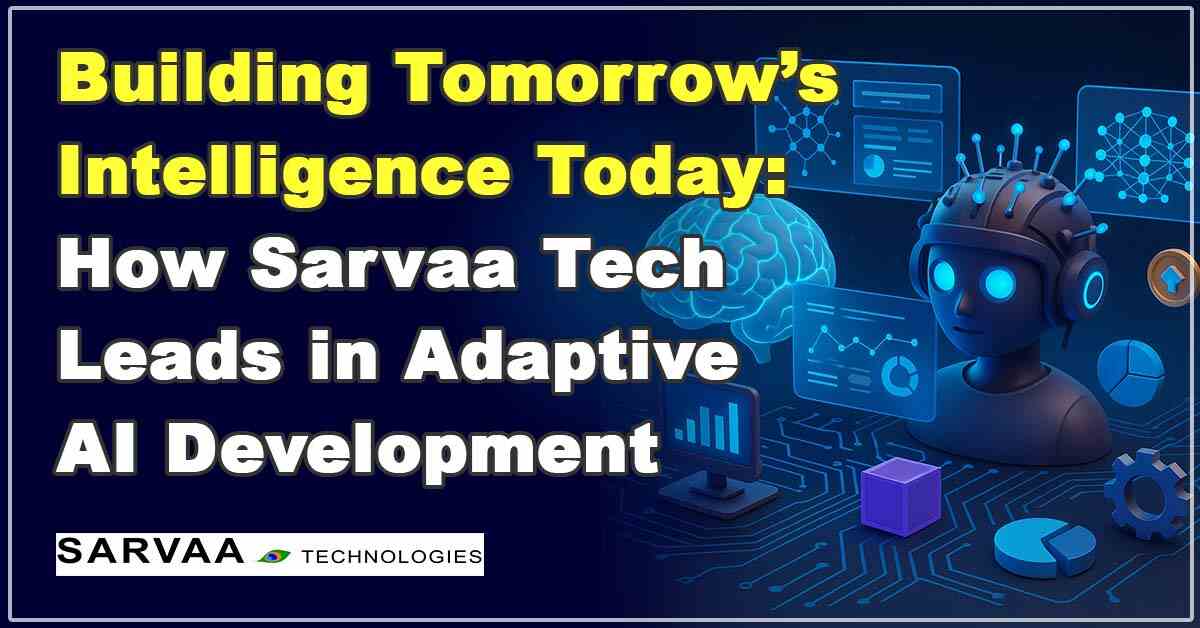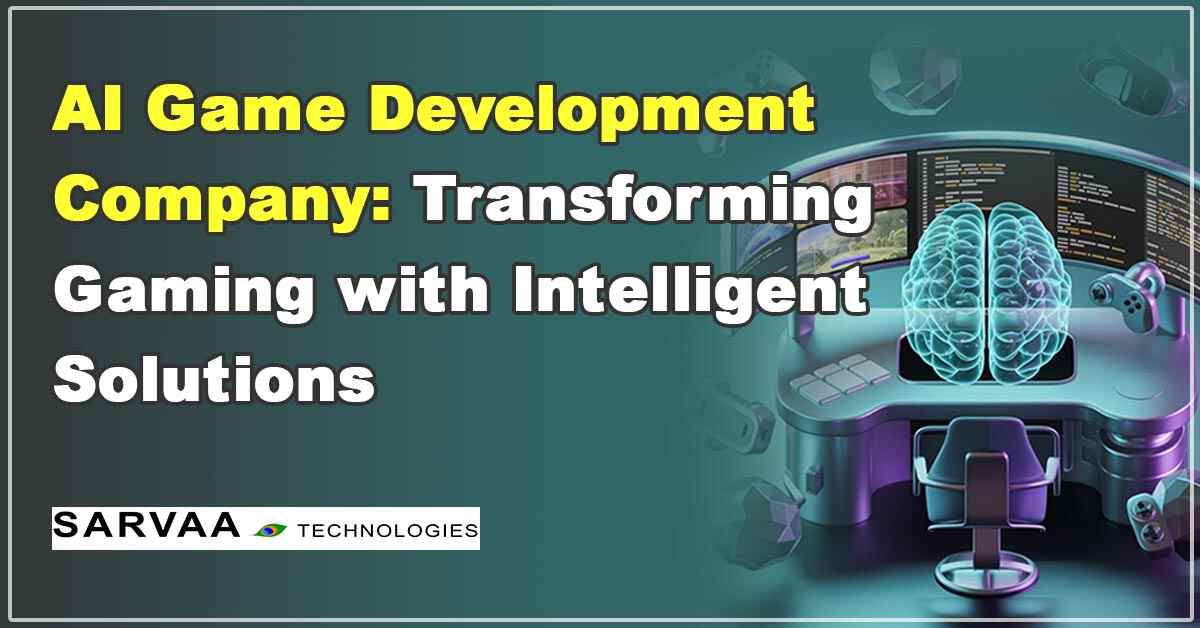🎮 Introduction: Why Games Still Matter in the Web3 Era
Games have changed. They’re no longer built just to entertain, they’re used to create real economies, build communities, and offer value beyond the screen.
In the blockchain space, games have taken on a bigger role. They involve tokens, assets, real-time rewards, and ownership models that were never part of traditional gameplay. But while the tech is new, the goal stays the same: the experience has to feel right for the user.
At Sarvaa Technologies, we work with teams who are building games for today’s players, fast, immersive, and grounded in real utility. We don’t just plug in blockchain tools and call it innovation. We look at how they fit into the bigger picture.
Here’s how we approach it:
- Make the game work before adding layers of complexity
- Use blockchain where it solves real problems (like asset tracking, rewards, or transparency)
- Design systems that don’t confuse users or slow them down
From play-to-earn platforms to NFT-based strategy games, we’ve helped businesses turn ideas into working products. Our focus is on what makes games usable, scalable, and valuable, without the hype.
In this post, we’ll walk through our process and what it really takes to build blockchain-based games that deliver both performance and purpose.
Designing Games with Purpose (Not Just Play)
In blockchain gaming, design is about building something that feels right and works as a product.
At Sarvaa Technologies, we begin every game project by stepping back and asking the most important question:
“What’s the purpose of this game beyond entertainment?”
Whether it's to:
- Create an NFT-based marketplace,
- Encourage repeat user engagement through reward cycles,
- Or onboard users into a larger Web3 ecosystem...
...the gameplay has to be designed around clear goals.
What We Focus On First
1. Understanding the player role
Who’s playing, crypto-native users or casual mobile players? The user’s familiarity with blockchain shapes how we design onboarding, navigation, and core actions.
2. Defining the game loop
We break down what keeps the player coming back. Is it rewarding? Strategy? Progression? Every interaction needs to build toward something meaningful.
3. Aligning mechanics with value
Play-to-earn only works if the gameplay is enjoyable first. Tokenomics, staking, or NFTs can enhance the experience, but they should never be the only reason someone plays.
4. Preventing friction
Too many early blockchain games made users jump through hoops just to start playing. We focus on seamless flow: connect wallet, understand the objective, start playing, without confusion.
Design is where most projects either take off or fall apart. We build out entire systems that support long-term engagement with clean scalability.
The Tech Stack That Powers Blockchain Games
In game development, flashy graphics and cool animations grab attention, but it's the underlying technology that decides how well a game actually works.
We, Sarvaa Technologies, pick tools and platforms based on one thing: how they serve the game’s core purpose: Performance, flexibility, and long-term scalability are non-negotiable.
Here’s how we build the backbone of Web3 gaming experiences:
🎮 Game Engines That Fit the Format
We primarily work with:
- Unity – Great for mobile-first cross-platform games. Offers rich visual control, quick prototyping, and supports most blockchain integrations.
- Unreal Engine – Ideal for high-end 3D games with deeper immersion. It’s resource-heavy but excellent for large-scale, premium experiences.
Choosing the right engine isn’t about what’s trending, it’s about what fits your goals, budget, and timeline.
🔗 Blockchain Integrations That Work
We integrate with popular Layer-1 and Layer-2 chains, based on what the game actually needs:
- Ethereum, Polygon, BNB Chain – For NFT minting, smart contracts, in-game marketplaces
- Immutable X, Solana, Avalanche – When you need high-speed, low-cost transactions for seamless in-game experiences
Smart contract development, wallet connection, and token logic are all handled in-house. We also make sure security as well as transparency are part of the build from Day 1.
📦 Backend Systems for Scale
No matter how fun a game is, it fails if it can’t handle traffic. So we set up:
- Cloud-hosted servers for real-time multiplayer support and reliable performance
- Player data storage with encryption and access control
- Analytics dashboards for tracking engagement, drop-offs, purchases, and play patterns
All of this helps founders and product managers get a clear view of what’s working, and what’s not.
🎯 Optional Tools We Use (If They Help)
- Firebase – For user authentication and real-time syncing
- PlayFab or GameSparks – For leaderboards, matchmaking, and live events
- Moralis / ThirdWeb / Alchemy – To streamline Web3 backend features
We only include tools when they solve a real problem, not just to fill up a tech stack.
In short, we build with purpose.
We don’t overcomplicate. We don’t use tools just because they’re popular. And we always plan for updates, maintenance, and growth.
Art, Animation & User Experience – Making Gameplay Feel Real
In a blockchain game, users might come for the rewards, but they stay for the experience.
The visuals, the animations, the way every screen responds, all of that shapes how players feel while interacting with your game. And when you're building for Web3 users, that feeling matters even more.
At Sarvaa, we build games that don’t just look good, but feel right, from tap to transaction.
🧑🎨 Visuals That Match the Game's Purpose
Whether it’s a futuristic sci-fi battle or a simple 2D strategy game with NFT cards, the art needs to support the story and keep things easy to understand, even for first-time players.
🎞️ Animation That Feels Natural (Not Distracting)
We create smooth transitions, movement logic, and loading feedback, these things help players stay connected without noticing the tech in the background.
- We use lightweight motion where it adds life
- Avoid visual clutter that slows performance
- Optimize for devices where players actually spend time (mobile-first, in most cases)
Animations are tested with real gameplay to avoid delays, lag, or confusion.
🧩 User Experience That Respects Time
Blockchain gaming can be exciting, but it also adds complexity. That’s why we spend extra time simplifying how players:
- Sign up / connect wallets
- Understand what they own (NFTs, tokens)
- Buy, sell, or upgrade assets
- Move from one level and screen to the next
Clear navigation, smart prompts, and smooth in-game flows help players trust your platform, and come back.
🎧 Sound, Voice & Feedback (If It Adds Value)
Good audio design is subtle, it creates mood, gives feedback, and improves focus. But we only add sound where it helps:
- Button taps with soft audio cues
- Background loops that don’t distract
- Voice elements for character depth, if needed
Every sound is tested for clarity, relevance, and how it feels during long gameplay sessions.
👥 Built for Real People
We regularly test early versions with real players. If something’s unclear, we fix it. If too many actions are needed, we streamline it.
Blockchain-based games already have a learning curve. Our job is to make sure that curve feels like fun to experience.
🤖 Smarter Gaming with AI – Making Play More Personal and Scalable
AI in games isn’t just about smarter opponents or auto-suggestions. When used right, it can make gameplay feel more intuitive and responsive to how players behave, especially in blockchain games where engagement directly impacts value.
At Sarvaa, we use as a tool to solve real gameplay platform problems.
📈 Adaptive Gameplay That Grows with the Player
No two players are exactly alike. Some are here to compete, others to explore. Using AI, we analyze player behavior and adjust the experience in real time:
- Difficulty can shift based on how a player performs
- Quests or challenges can become more relevant based on past actions
- Game pace can adjust for better retention
This kind of smart balancing helps prevent boredom — reduces drop-off.
🔄 Smarter Game Economy Management
In blockchain gaming, the in-game economy matters just as much as the game itself. With AI, we can:
- Monitor how players earn, spend, or trade tokens
- Detect potential abuses or exploit patterns
- Auto-adjust token emissions or rewards based on supply-demand trends
This keeps the ecosystem healthy and helps maintain long-term value.
💬 Chatbots, Support & Player Assistance
AI also plays a role in user support:
- In-game chatbots can guide new users through wallet setups or gameplay basics
- Automated support can answer common questions instantly
- AI-driven moderation tools can keep chatrooms or multiplayer sessions clean and secure
For B2B game clients, this reduces the load on human support teams without compromising experience.
📊 Real-Time Analytics & Recommendations
We track and respond to player behavior using AI to:
- Recommend in-game purchases based on play style
- Identify when a player is about to churn; offer a win-back offer
- Flag moments where players get stuck or confused
This helps product teams make faster, smarter decisions, and keeps the user journey smooth.
🎮 AI Is Invisible, But It Matters
Here’s the truth: if users notice the AI, it’s probably too obvious.
We aim to make AI work quietly in the background, always improving things, never interfering.
When a player says “this game just feels smooth” or “it knew exactly what I needed next,” that’s AI doing its job.
🚀 Testing, Launch & Scaling – From First Play to Long-Term Growth
Launching a game is about making sure everything works when real players show up.
In Sarvaa Technologies, we approach game launches with the same mindset we use for development: think long-term, test like it matters, and scale with clarity.
✅ Rigorous Testing Before Go-Live
We run every project through structured testing phases:
- Functional Testing: We check how each element behaves, buttons, actions, screens, smart contracts, and transactions. Nothing should break, ever.
- Device & Platform Testing: Games don’t just run on one device. We test across platforms (Android, iOS, desktop) and screen sizes to make sure the experience holds up.
- Security & Smart Contract Audits: Especially in blockchain-based games, security isn’t optional. We audit contracts, wallet flows, and data protection layers for vulnerabilities.
- User Testing: Real users, real feedback. We gather insights from early testers to catch unclear instructions, confusing flows, or places where users might drop off.
📢 Launch That Actually Works
A smooth launch is confidence. Here's how we support it:
- Staged Rollouts: Soft launches with selected user groups help us track issues early
- Server Load Testing: We simulate traffic spikes to ensure the backend holds up
- Post-launch Monitoring: Our job doesn’t end at launch, we stay close to usage patterns, bugs, and player feedback for immediate response
📈 Scaling with Clarity
Once the game gains traction, new challenges arrive. Scaling is staying stable as things grow.
We help clients plan for:
- Performance scaling using cloud-based infrastructure
- Adding new game features without breaking the core
- User retention through event-based updates, AI-driven offers, and simplified UX
- Token economy balancing, ensuring in-game rewards stay valuable and sustainable
We also set up growth dashboards that give founders and teams a clear picture: what’s working, what’s not, and where to go next.
🎯 Launch Is a Milestone
We treat launch as a checkpoint. Our focus is on creating games that grow steadily to stand strong in the market.
With the right structure in place, you're not just launching a game, you’re building a platform that can evolve, expand, and stay relevant over time.
🧩 Conclusion
Building a game in the blockchain space actually is turning that idea into something stable, playable, and rewarding for the user.
At Sarvaa Technologies, we build long-term digital products that work under pressure, adapt to change, and feel right from the very first interaction.
Whether it’s:
- A play-to-earn concept with real token utility
- A mobile-first NFT game with smooth onboarding
- Or a strategy platform that needs both smart design and deep scalability
we come in as your tech partner — not just a vendor.
Our process is shaped by years of practical experience:
- We start with clear design thinking
- Use tech stacks that are built to last
- Focus on visuals and animation that support gameplay
- Bring in AI only where it improves player experience
- As we launch with testing, monitoring, and scale in mind
We work closely with founders, product teams, and investors who understand that good game development is part creativity as well as part precision.
If you're planning to launch a blockchain-based game, looking to level up an existing one, we’re ready to help you build a product that performs, from day one to for the long haul.
Let’s build something your players will actually enjoy.
Let’s make sure the tech just works.
And let’s grow it the right way.






